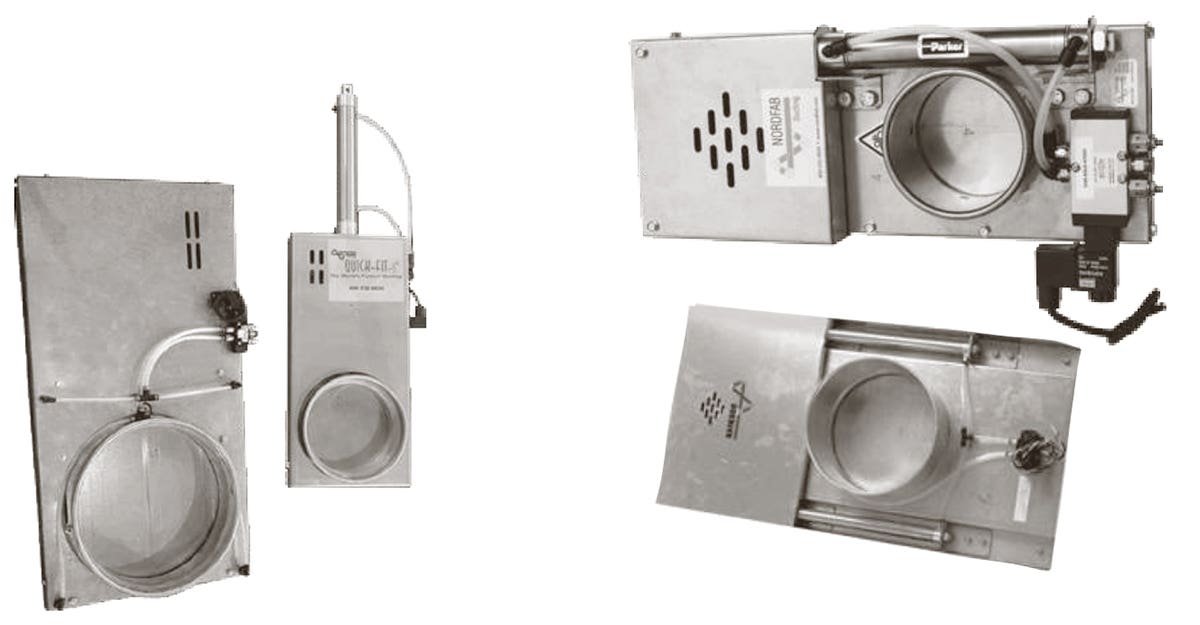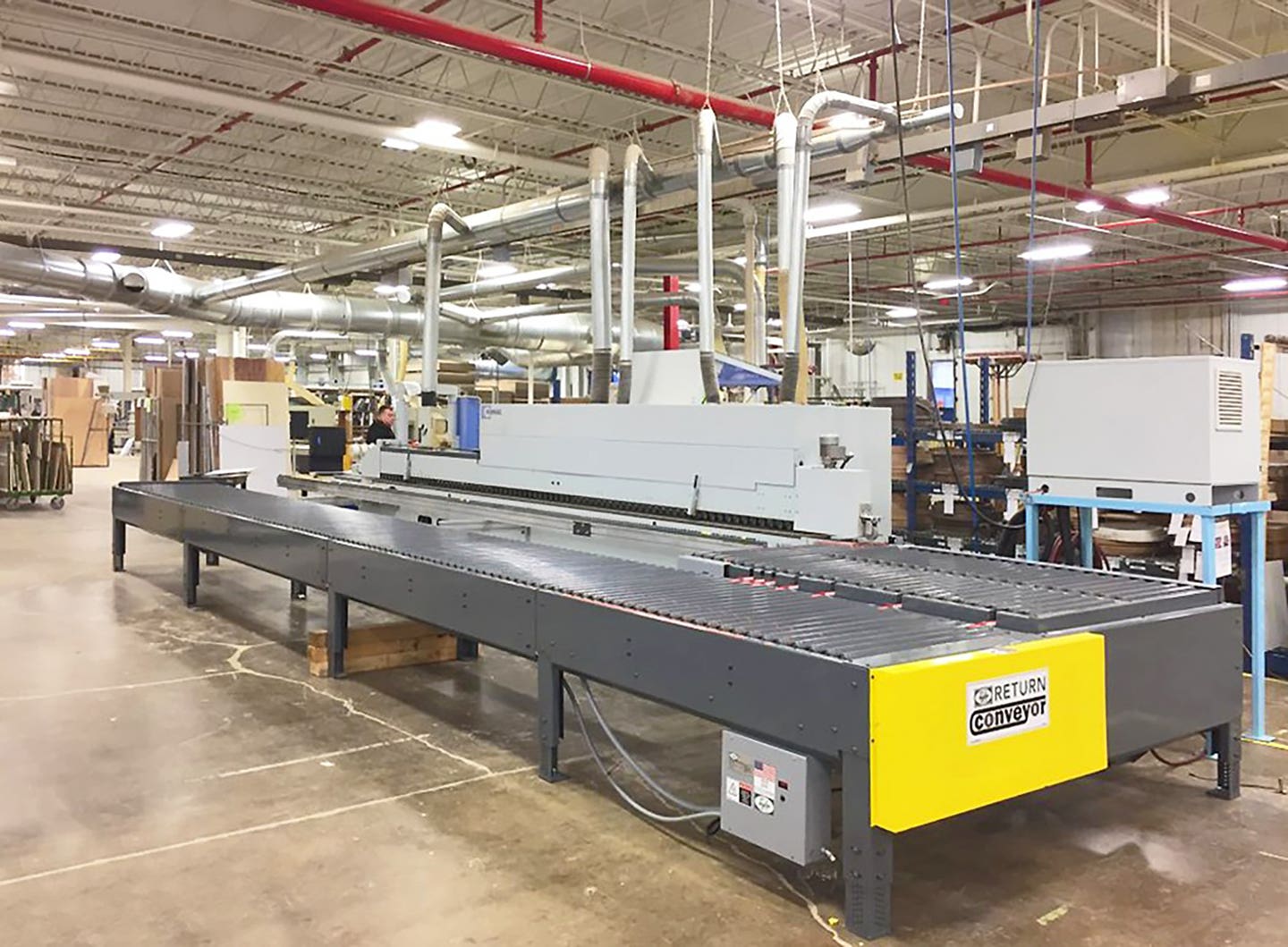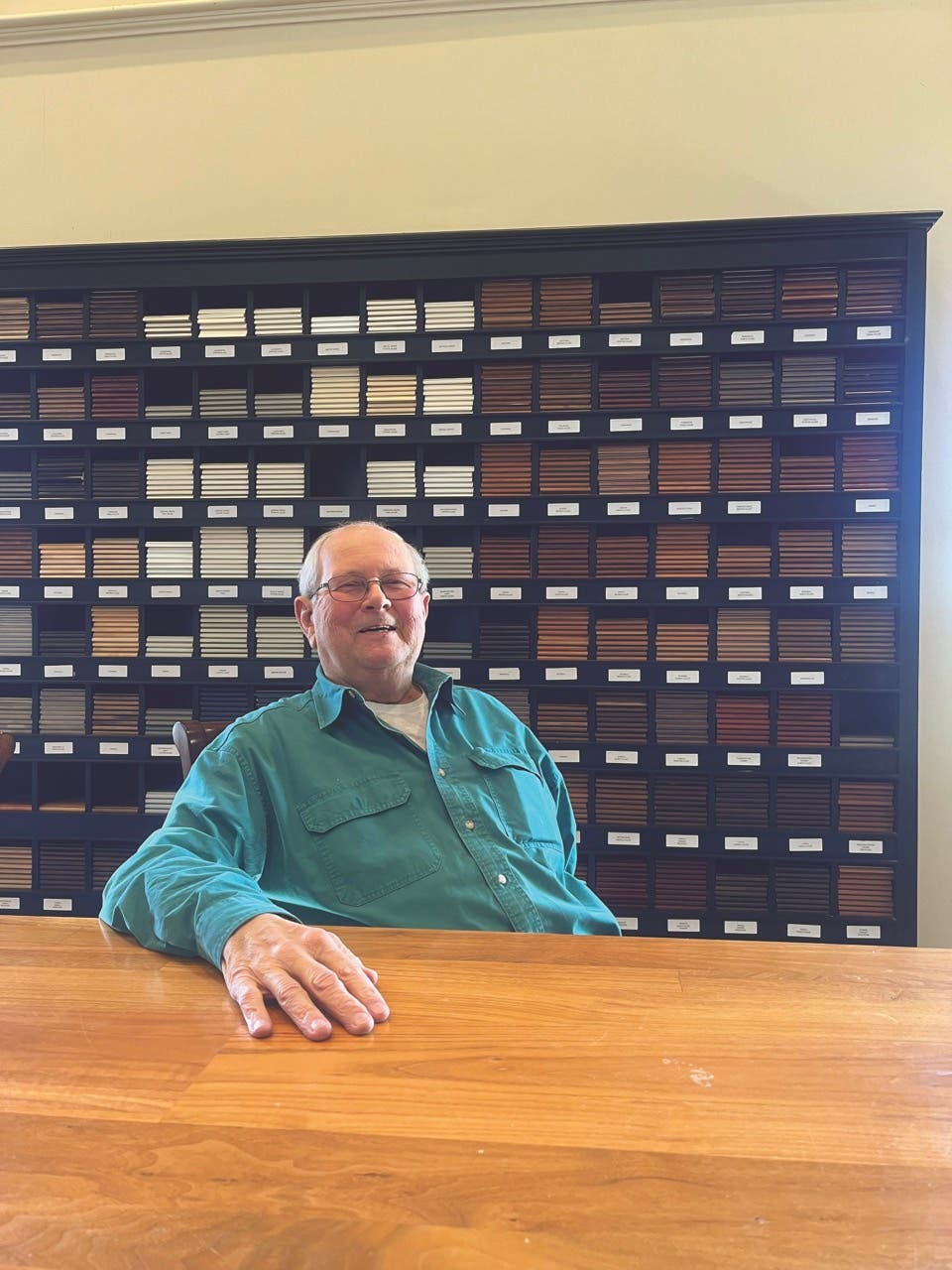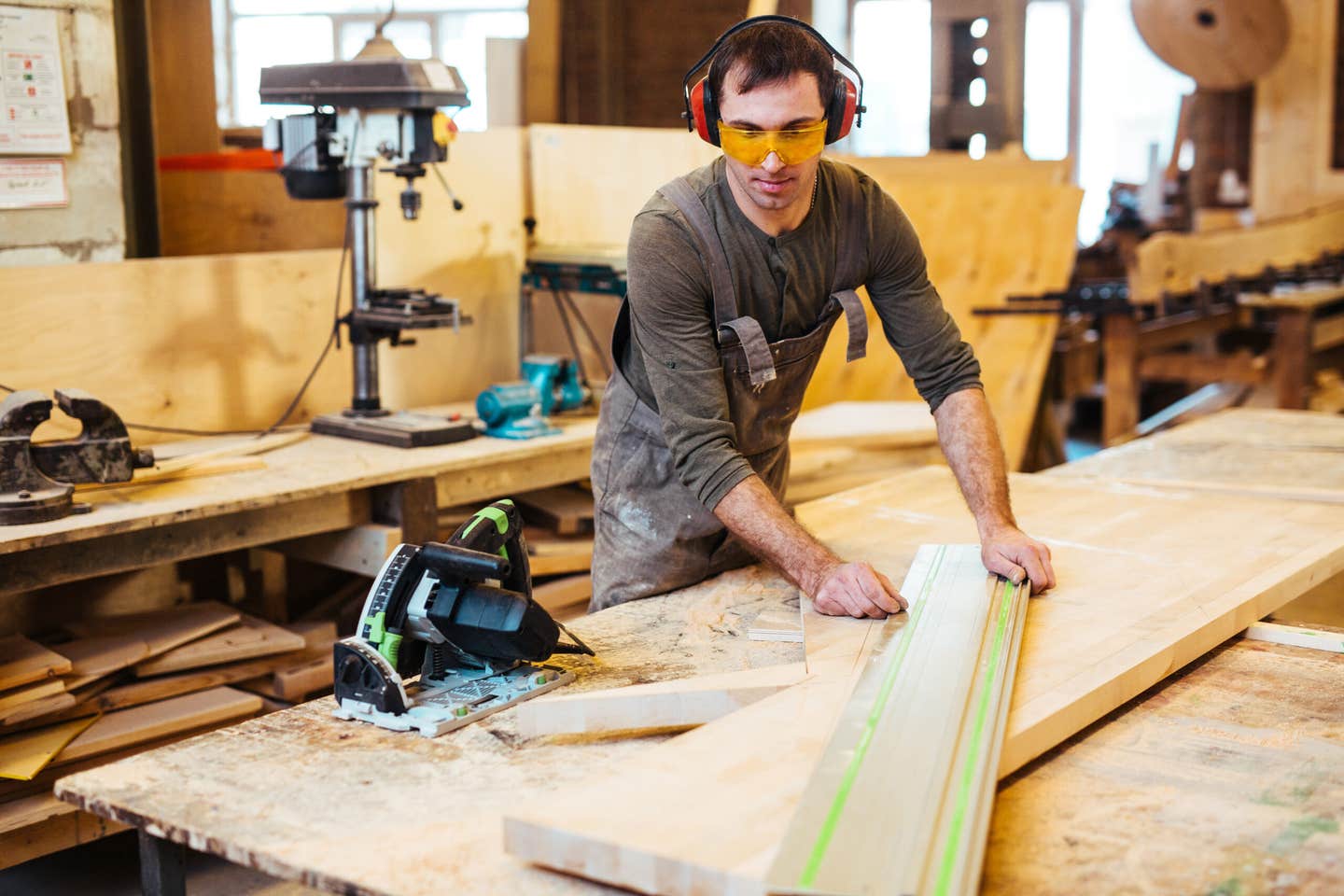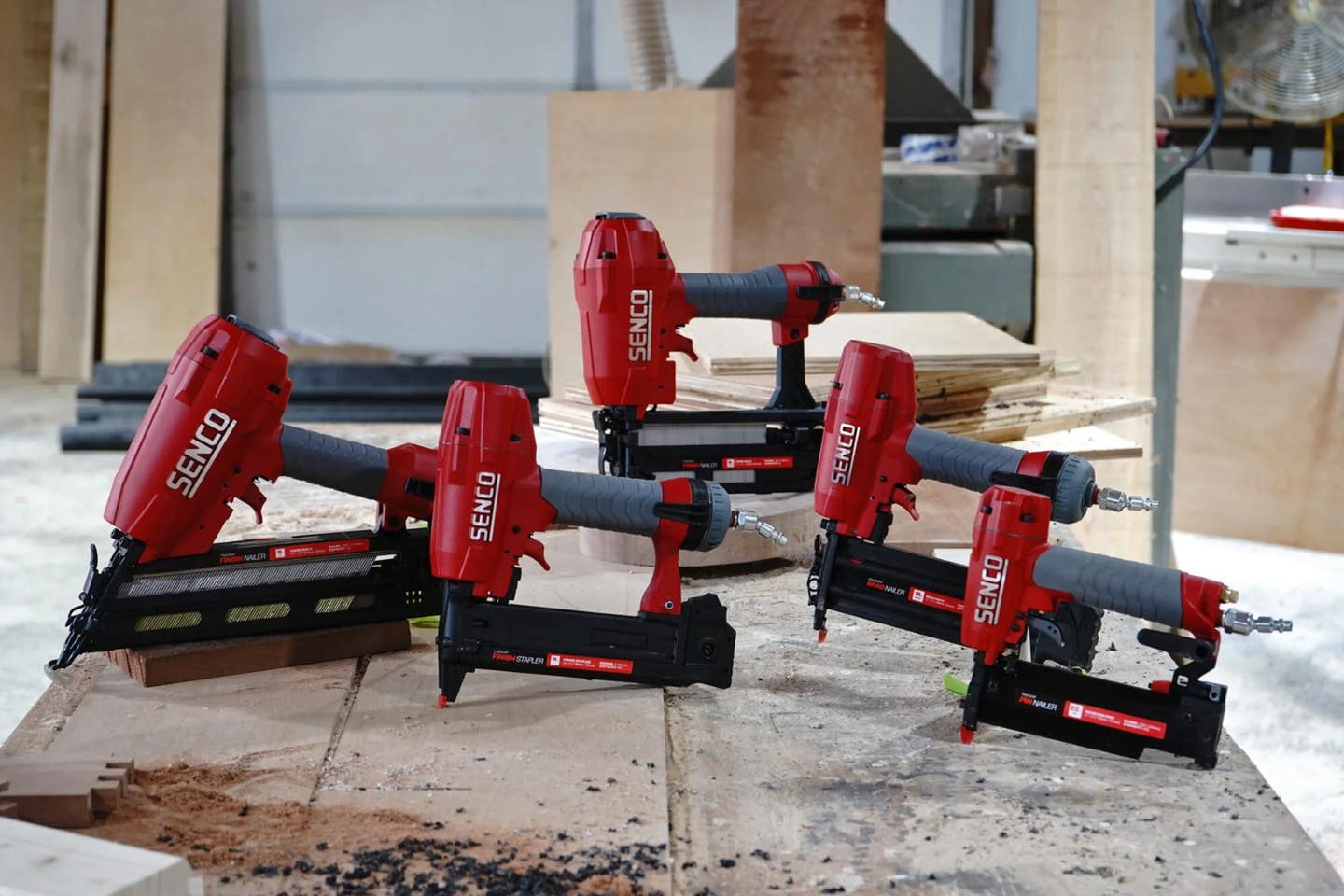Rising To The Challenge
From swooping spiral staircases and elaborate multi-tiered layouts, to traditional straight patterns and floating, embellished, ornamental designs, Hardwood Design Inc. of Exeter, R.I. can do it all.
From swooping spiral staircases and elaborate multi-tiered layouts, to traditional straight patterns and floating, embellished, ornamental designs, Hardwood Design Inc. of Exeter, R.I. can do it all. HDI has specialized in the fine art of custom stairbuilding throughout New England and New York for almost 40 years. Owner Bill Bivona and his crew of nine employees are in a good position with strong demand and a full schedule.
“I think within the stair industry, I don’t want to say there’s not competition but there’s enough work where larger shops like us and a handful of other one-man, two-man, three-man shops can operate. There’s plenty of work, and we all seem to have our own client base, so we’re not stepping on any toes,” says Bivona.
“Right now, with the size that we are, I’m struggling to keep up with emails and requests. It’s overly stressful. Now we have this economic downturn ahead. It’s going to happen. The projections for construction are not positive, so maybe what will happen is demand will come down to where it meets the supply of labor.”
Since our last visit
Technology, along with other innovations and strategies, has brought the shop to another level since it was previously featured in Woodshop News (“Curved path to success”) in 1999.
The history of HDI began in 1984 when Bivona and two friends, Bruce Decker and David Lawrence, rented space in the Dorset Mill, a historic 20,000-sq.-ft. textile mill in Exeter.
I thought we’d be furniture makers, that was the goal,” says Bivona. “I went to Boston University and at that time they had a program in artisanry. I was getting a business degree but took some elective classes in woodworking where I met these two guys that worked in a boatbuilding yard (Snug Harbor) in Rhode Island, and we decided to group resources.
“We really wanted to build furniture but were struggling to get any paid commissioned furniture. We tried building some spec pieces, and they’re all in our houses, of course. That market is just so hard to break into. We were subsidizing furniture with cabinets, kitchens and built-ins, even regular carpentry. We accidentally stumbled upon the stair thing, and gradually it took over until we said we’re going to do just stairs with the occasional piece of millwork.”
The partners purchased the mill in 1986, knowing they’d want to remain there (the high ceiling is perfect for stair construction), and jobs poured in through contractors, architects, designers and homeowners.
“In the Rhode Island market, there was a hole. Stairs were always built by the trim carpenter, and they weren’t really using traditional stairbuilding techniques. They weren’t routing the stringers and nails showed everywhere.”
Eventually, Bivona’s two partners moved on and he was joined by Robinson Berry, a key employee and master stairbuilder who stayed until 2016. By then, the company had more than 20 employees.
Embracing technology
The initial service area included most of Rhode Island and high-end homes in Newport, Jamestown and Watch Hill. The market expanded to Boston, Martha’s Vineyard, and Greenwich Village, N.Y. Things really took off at the tail end of the Great Recession.
“We had a big transition in 2009,” says Bivona. “Before the recession we were selling mass produced parts within our jobs, combined with the things that we make – mostly turnings, rails and fittings. Those were all going to the middle market, that $500,000 house and the large developments that were springing up locally.
“That market just collapsed when that whole housing bubble burst. At the time, probably only 30 percent of our business was high end, the rest moderate to middle, and wealthy people were still spending money but squeezing you for price. So, we shrunk the company to 14, we laid off six people, and strictly focused on the high-end stuff.”
With the influx of work, Bivona had a change of heart and made the decision to purchase a CNC – a 3-axis Standard Router with a 5’ x 10’ table – in 2001. The brand is no longer in business, but the machine still runs like new and was enhanced with a Fagor controller five years ago.
“At the time, a lot of shops even our size didn’t have a CNC. Everyone told me, ‘You’re crazy. It’s a ton of money. You’ll never figure it out.’ A company upstairs had bought one two years before us. It was a little 4’ x 4’ machine, so I was having them make some components. They do high-end gift items. It just struck me that we needed to have our own machine here. We cut our stringers, rail fittings, patterns, tread returns, anything that’s repetitive or really unique.
“The CNC and digitizing our designs in AutoCAD gave us an advantage over other stair companies. It gave us better precision and we could execute design concepts that would be so challenging and impractical to do by hand.”
The shop has an extensive list of industrial machinery that helps get jobs out the door, but nothing would happen without the brains and skills of his team. Binova spends most of his time in project management and engineering.
A specialty niche
HDI completes about 130 jobs a year, which range from a $5,000 parts order to a $400,000 two-stair package. Bivona says that’s minimal compared to production shops that crank out hundreds of stair orders annually, but the difference is HDI’s attention to details.
“I think stairs are probably the most difficult aspect of millwork. You have to have a furniture-grade appearance, so the quality standards for at least the balustrade are extremely high. You have a structural component that’s driven by code, so you have load requirements for the handrail and walking surface.
“You’ve also got design and function. You don’t want a 55” wide stair that funnels you into a 36” hallway. Things need to be proportionate. For me, some of the designs are so challenging that it makes you want to rise to the challenge, prove you can execute. Even real seasoned carpenters have great difficulty with basic stair construction and layout.”
Bivona has been a member of the Stairbuilders & Manufacturers Association for 25 years, which has honored his company with several awards.
HDI has gained such a favorable reputation in the region that it gets invited to almost every significant job, according to Bivona.
“Oddly, our best years were during the pandemic. Our main clientele has a lot of cash and were building and renovating. They wanted to get out of the city to sanctuary properties so they could go and be safe. It was anywhere but the city.”
The downside of the pandemic was losing employees, who either moved away or retired.
“Now I can’t replace them. It’s like that with many people I’ve talked to. I’ve pretty much given up,” says Bivona.
“All the best people that we’ve had here, we’ve built, as opposed to having somebody come in from the outside and say what they want to make, which is ridiculous, and what they know, which is nothing. Many of us have just given up on finding, so we’re trying to build instead. We’re keeping our ears open. Being in South County doesn’t help. It’s remote and the cost of housing around here is very high.”
Bivona, who just turned 60, says he wants to work another 10 years and maybe go part-time, if he can find enough help.
“We’re going to just dial it in. I think the plan is to get super lean and continue to build the network of resources that we’ve always had to get these projects done, and we’re picking and choosing a lot more.
“The biggest challenge everyone is going to face is the labor, regardless of the market, so we’ll keep working on that.”
This article was originally published in the January 2023 issue.



